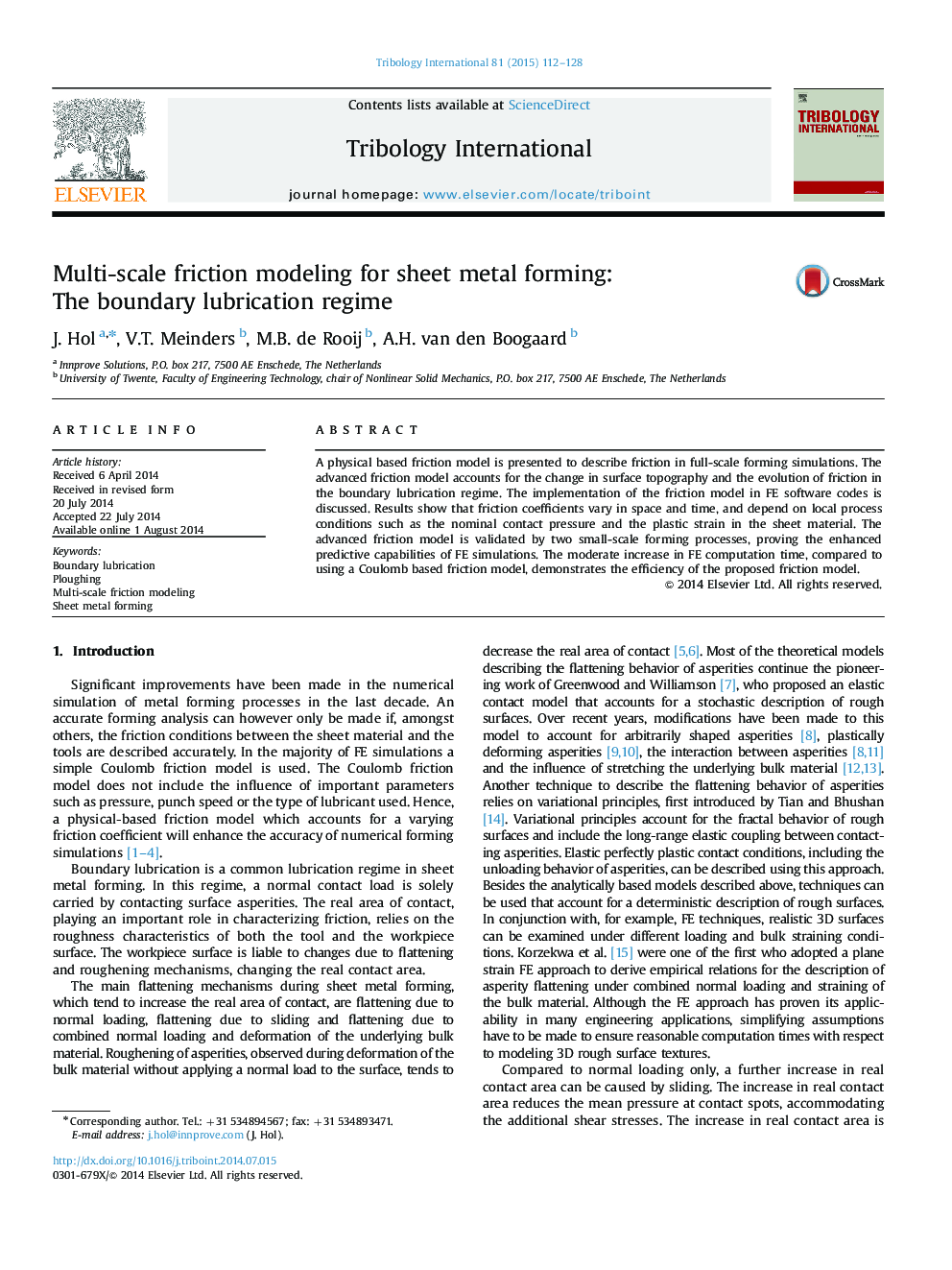| Article ID | Journal | Published Year | Pages | File Type |
|---|---|---|---|---|
| 7003125 | Tribology International | 2015 | 17 Pages |
Abstract
A physical based friction model is presented to describe friction in full-scale forming simulations. The advanced friction model accounts for the change in surface topography and the evolution of friction in the boundary lubrication regime. The implementation of the friction model in FE software codes is discussed. Results show that friction coefficients vary in space and time, and depend on local process conditions such as the nominal contact pressure and the plastic strain in the sheet material. The advanced friction model is validated by two small-scale forming processes, proving the enhanced predictive capabilities of FE simulations. The moderate increase in FE computation time, compared to using a Coulomb based friction model, demonstrates the efficiency of the proposed friction model.
Related Topics
Physical Sciences and Engineering
Chemical Engineering
Colloid and Surface Chemistry
Authors
J. Hol, V.T. Meinders, M.B. de Rooij, A.H. van den Boogaard,
